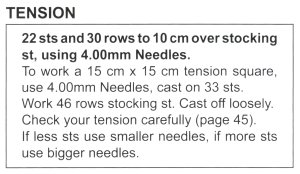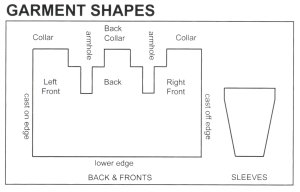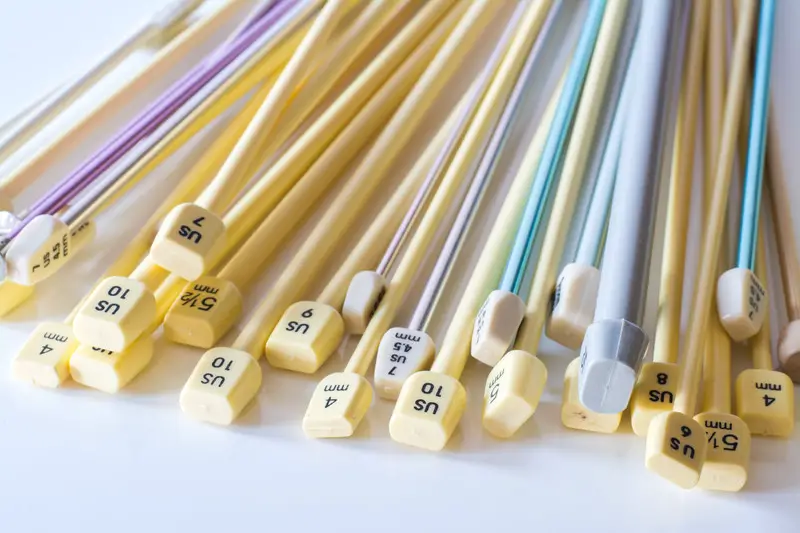Reading a Knitting Pattern
Quick Links
- Archived - Ask a Knitting Question
- Basic Knitting Stitches
- Beginner Knitting Patterns
- Knitting Abbreviations
- Needle Sizes Chart
- Tension Squares
- Yarn Comparison Chart
FYI: This site receives a small amount in commissions from affiliate links and third-party advertising.
Reading a Knitting Pattern is probably one of the most confusing things you will ever have to do when you are learning how to knit. My daughter looked at one of my patterns yesterday and described it as 'gooble-de-gook'. I don't think that is a real word, but it expresses her frustration quite well!
Most patterns are written in an abbreviated form with the instructions consisting of a string of knitting abbreviations that list the various steps in completing a row and it can take a little time to work out what they all mean.
How are You at Reading a Knitting Pattern?
Do you know how to read a knitting pattern?
Most patterns are laid out in sections. The examples presented below are taken from a Patons pattern book I am currently using to knit an aran sweater.
Measurements

In this section of the pattern you will find details of the sizes included in the pattern.
You are generally provided with the both the standard sizing and the actual size of the finished article as well as the garment length.
This section will also specify the brand and type of wool that the pattern was designed for and the number of balls you will need to make your garment.
Take heed of the advice offered about dye lots.
Although the same dyes are used for each batch of the same color, each batch can be slightly different. Sometimes it is difficult to distinguish color differences when the wool is in a ball, but I guarantee you will be able to see it after you have knitted it!
Needles and Extras

The needles and extras section provides you with a list of the knitting supplies (other than the wool) that you will need to make the garment.
For this particular pattern, you only need one set of needles but for most patterns you will need at least two different sizes of knitting needles, stitch holders and a wool needle for sewing your garment together.
Depending on the pattern you may need other items like cable needles, buttons or other finishing items.
Tension

If you are a beginner, this section is very important.
To get the desired results the garment needs to be knitted at the correct tension and this section provides instructions on how to work out what your natural tension is by knitting a tension square.
Garment Shape

Not all patterns will have this section or table but for those that do, the garment shape section of your pattern provides a diagram of what you finished pieces should look like.
For this particular pattern, the body is knitted in one piece up to the armholes, so there will only be three pieces - the body and two sleeves.
Knitting Instructions

This section is the meat of the pattern, and the one my daughter describes as 'gooble-de-gook'.
Here you will find instructions for knitting each piece of your garment as well as how to put it all together, and you will probably find that this is the most difficult part of reading a knitting pattern.
Patterns instructions are written in a kind of short-hand, using standard abbreviations. If they were written in plain English a pattern, reading knitting patterns would be a breeze, but a pattern that would normally be two or three pages long would be the same size as an average novel!
Basically, you need to make yourself familiar with each of the abbreviations and knit your piece accordingly.
To illustrate the translation of the excerpt to the left is:
1st row: Knit all stitches to the end of the row.
2nd row: Purl the first stitch, *purl one stitch, knit one stitch* repeat the last two stitches to the end of the row.
Reading a knitting pattern can be difficult if you have any problems, just go to the knitting questions page I will help you if I can.
Couldn't Find What You Were Looking for?
Try searching the site using the search box below:

Recent Articles
-
Shetland Knitting and Shetland Knitters
Feb 07, 21 07:44 AM
Shetland knitting and the women in the Shetland Isle who create Shetland lace are among the best knitters in the world. -
Fixing Knitting Mistakes
Jan 28, 21 02:35 AM
When you are learning how to knit, you are going to make a few mistakes. It might not make you happy but fixing knitting mistakes is par for the course. -
Shetland Lace Knitting
Dec 11, 19 07:03 PM
Shetland Lace Knitting is a particular style of knitting that developed in the Shetland Islands and was one of the main exports of the Island early in the last century.
 >
>




